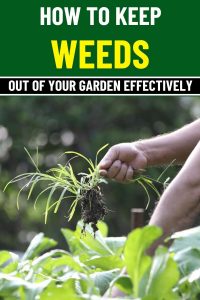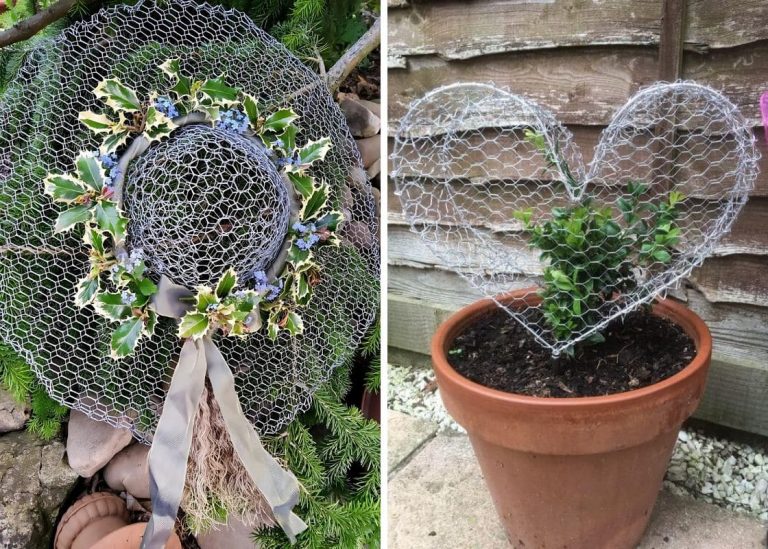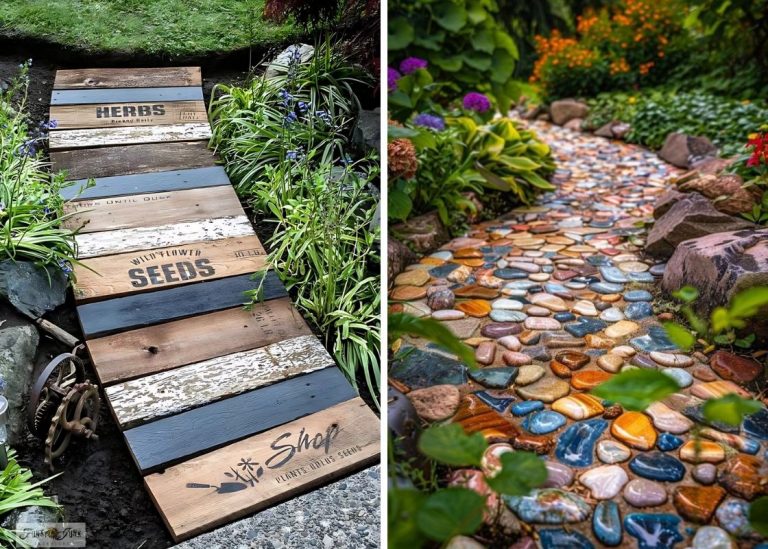9 Effective Strategies to Keep Weeds Out of Your Garden and Keep It Thriving
There’s this one photo I took of my garden a few years ago—my daughter barefoot on the path, sun-dappled basil in the background, and cosmos swaying like they were dancing to a secret breeze. What the photo doesn’t show is what I saw just outside the frame: a creeping army of weeds, silently staking their claim.
It started with one dandelion I left because “it looked kind of pretty,” and ended with thistles, crabgrass, and bindweed wrapping themselves around my raised beds like they owned the place. That summer, I spent more time weeding than watering. My hands were stained with soil, my patience thinning faster than my mulch.
That’s when I decided—no more being reactive. I needed a system, a seasonal rhythm that allowed me to actually enjoy my garden without constantly battling intruders. I spoke with older gardeners in my neighborhood, read notes from my grandmother’s journals, and tried every natural trick under the sun.
Turns out, it wasn’t about winning a war. It was about shifting the balance. If you’re tired of letting weeds steal the show, come pull up a chair (not a dandelion) and let’s chat about what really works.
Understanding Weeds
Weeds are plants that grow where they’re not wanted, often competing with your garden plants for light, water, and nutrients. They can emerge in various forms: annuals, perennials, and biennials, each with its own strategy for spreading.
Annual weeds complete their life cycle in one season, while perennials return year after year, often spreading through roots, rhizomes, or seeds.
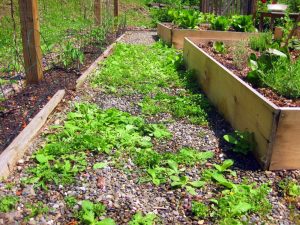
Understanding these differences is important because it helps you tackle them with the right approach. After all, not all weeds are created equal, and each one requires a different method to eliminate.
9 Effective Strategies to Keep Weeds Out of Your Garden
1. Start Strong: Prep the Soil Like You Mean It
Before anything goes into the ground, I give the soil a bit of tough love. Weeds love weak spots—bare soil, compacted patches, forgotten corners. So I prep the garden beds as if I’m setting the stage for something beautiful (because I am).
Tips I’ve learned:
-
Pull weeds roots and all—no shortcuts.
-
Loosen the soil deeply with a garden fork before planting.
-
Add compost or aged manure to strengthen the soil and give your plants a head start.
Weeds struggle to thrive in rich, healthy, well-prepared soil. Let’s give them fewer chances to sneak in.
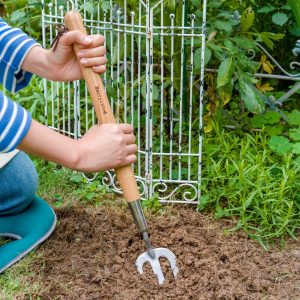
2. Mulch Like You’re Tucking Them Into Bed
I never used to mulch. I thought it was optional—until one June, when the weeds outgrew the flowers in my front bed. That’s when I discovered the quiet power of a thick mulch layer.
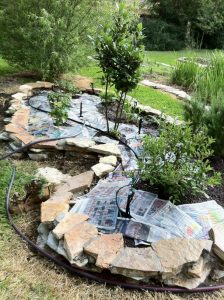
I always make sure to add a thick layer (around 3-4 inches) to my garden beds.
Not only does it keep weeds down, but it also helps to retain moisture, maintain consistent soil temperature, and improve the health of the soil as the mulch decomposes.
3. Using Weed Barriers and Landscaping Fabric
A friend introduced me to landscape fabric, and I’ll admit—I was skeptical. But when I saw her paths free of weeds in late July while mine looked like a jungle, I asked her to show me how she did it.
Instructions:
-
Lay the fabric down after clearing the soil and adding amendments.
-
Cut X-shaped slits where your plants go.
-
Pin it down, then top with mulch to disguise it.
It’s a fantastic option for walkways, under raised beds, or around perennials where you want low maintenance.

4. Hand-Weeding: The Tried-and-True Method
There are days I bring my coffee mug out with me, crouch next to my zinnias, and just pull weeds in silence. No music. No tools. Just me, the soil, and a sense of satisfaction.
Helpful habits:
-
Weed after a rain—the roots slide out easier.
-
Use a hori-hori knife or old butter knife for deeper ones.
-
Pull the whole root or it will be back, trust me.
I’ve come to enjoy this quiet time. It’s not just maintenance—it’s care. And when done consistently, it keeps things from getting out of hand.

5. Watering Wisely
This one took me a while to learn. When you water the entire garden surface, you’re not just feeding your flowers—you’re watering every weed seed, too.
Try this instead:
-
Use drip irrigation or soaker hoses that target roots directly.
-
Avoid sprinklers if possible, especially in garden beds.
-
Water early in the morning to avoid waste from evaporation.
Less surface moisture = fewer opportunities for weeds to thrive. And your plants will thank you with deeper, stronger roots.

6. Natural Weed-Killers: Eco-Friendly Solutions
I’ve tried a dozen natural weed killers, but only a couple are worth repeating. One in particular has saved my paved pathways and patio cracks from becoming weed central.
Two go-to recipes:
-
Vinegar + salt + dish soap
-
Mix 1 gallon white vinegar, 1 cup salt, and 1 tbsp dish soap.
-
Spray directly onto the leaves on a sunny day.
-
Works best on young weeds with soft leaves.
-
-
Boiling water
-
Just what it sounds like. Pour carefully on stubborn weeds between cracks.
-
Great for driveways or garden paths—just avoid spraying near your plants.
-
I skip chemical herbicides entirely. These simple solutions do the trick without harming the bees or soil.

7. Planting Ground Covers and Companion Plants
Bare soil is an open invitation to weeds. That’s why I started planting more herbs and low-growing companions—plants that cover ground and smother invaders before they get started.
Favorites in my garden:
-
Creeping thyme: fragrant, hardy, and bee-friendly.
-
Clover: builds nitrogen in the soil.
-
Nasturtiums & marigolds: deter pests and shade the soil.
One corner of my garden used to be a weed trap. Now it’s a lush carpet of oregano and alyssum buzzing with pollinators.
8. Crop Rotation and Raised Beds
My raised beds changed everything. Not only do they look neat, but they make it easier to manage soil and prevent weed spread.
Rotation advice:
-
Don’t plant the same crop in the same spot year after year.
-
Rotate leafy greens, root veggies, legumes, and nightshades to disrupt weed and pest cycles.
This approach has worked wonders in my veggie beds. Plus, it keeps the soil from getting tired—and the plants from getting cranky.
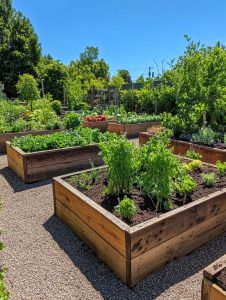
9. Prevention: Keep Weeds From the Start
If I’ve learned anything, it’s this: weeds love chaos. They take root in neglect. So I’ve started being just a little more proactive.
My favorite prevention habits:
-
Quick walk-throughs twice a week—just me and my basket.
-
Reapply mulch every spring and fall.
-
Sprinkle corn gluten meal early in the season to stop seeds from sprouting.
A few small steps now save me from hours of pulling later. And my plants—finally—get the spotlight they deserve.
Final Thoughts: Make Peace With the Process
Weeds will show up. That’s just part of the deal. But with a little intention, consistency, and a whole lot of mulch, they don’t have to win.
My garden still surprises me with the occasional stubborn invader. But now I smile, pull it gently, and think, “You almost had me.”
If you’re looking to fall in love with your garden again—not just when it’s blooming, but all season long—start here. You don’t need perfection. Just presence.
